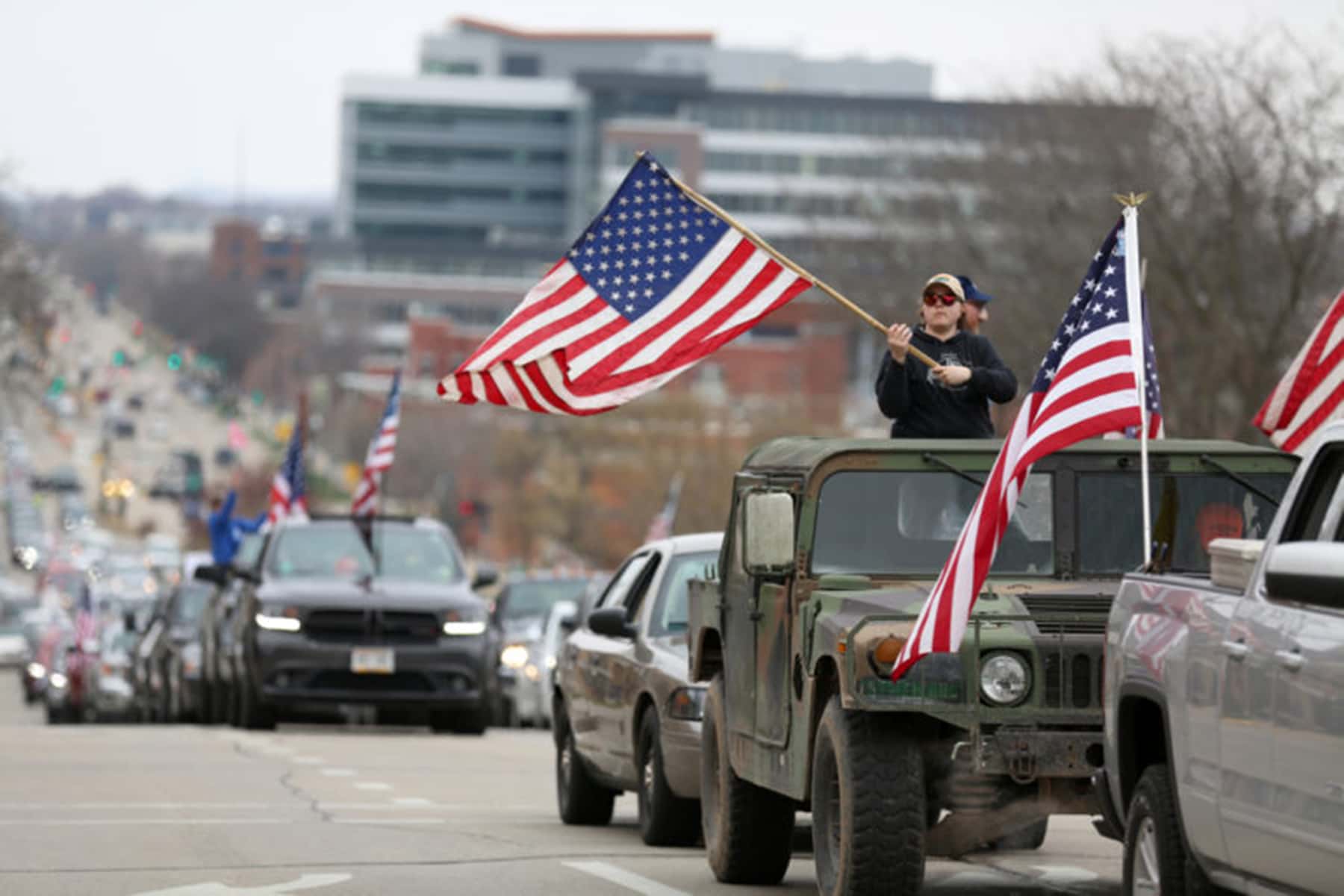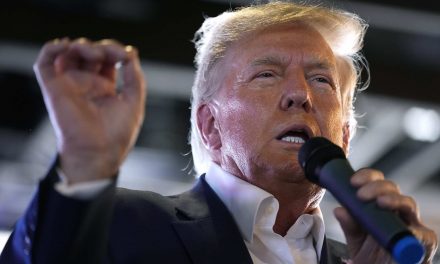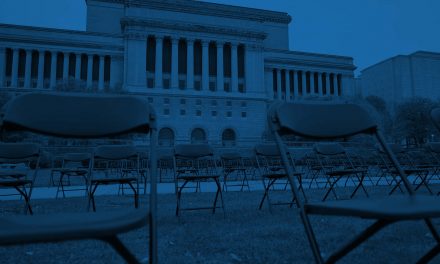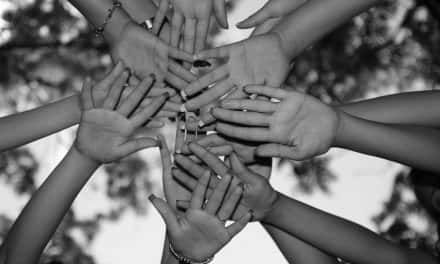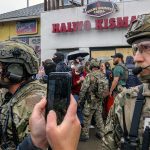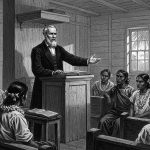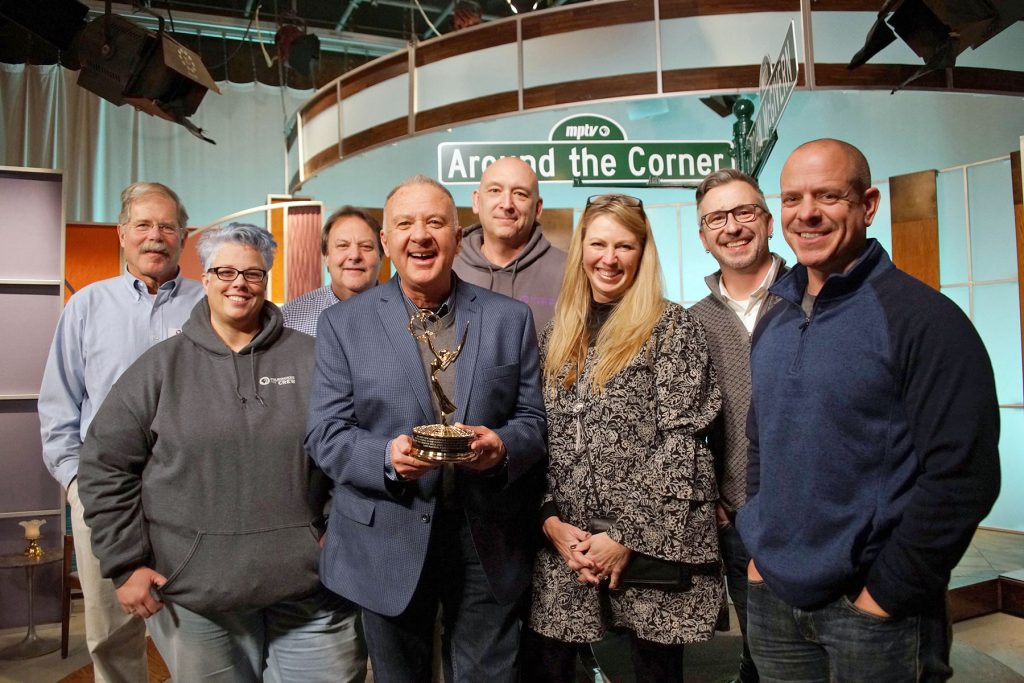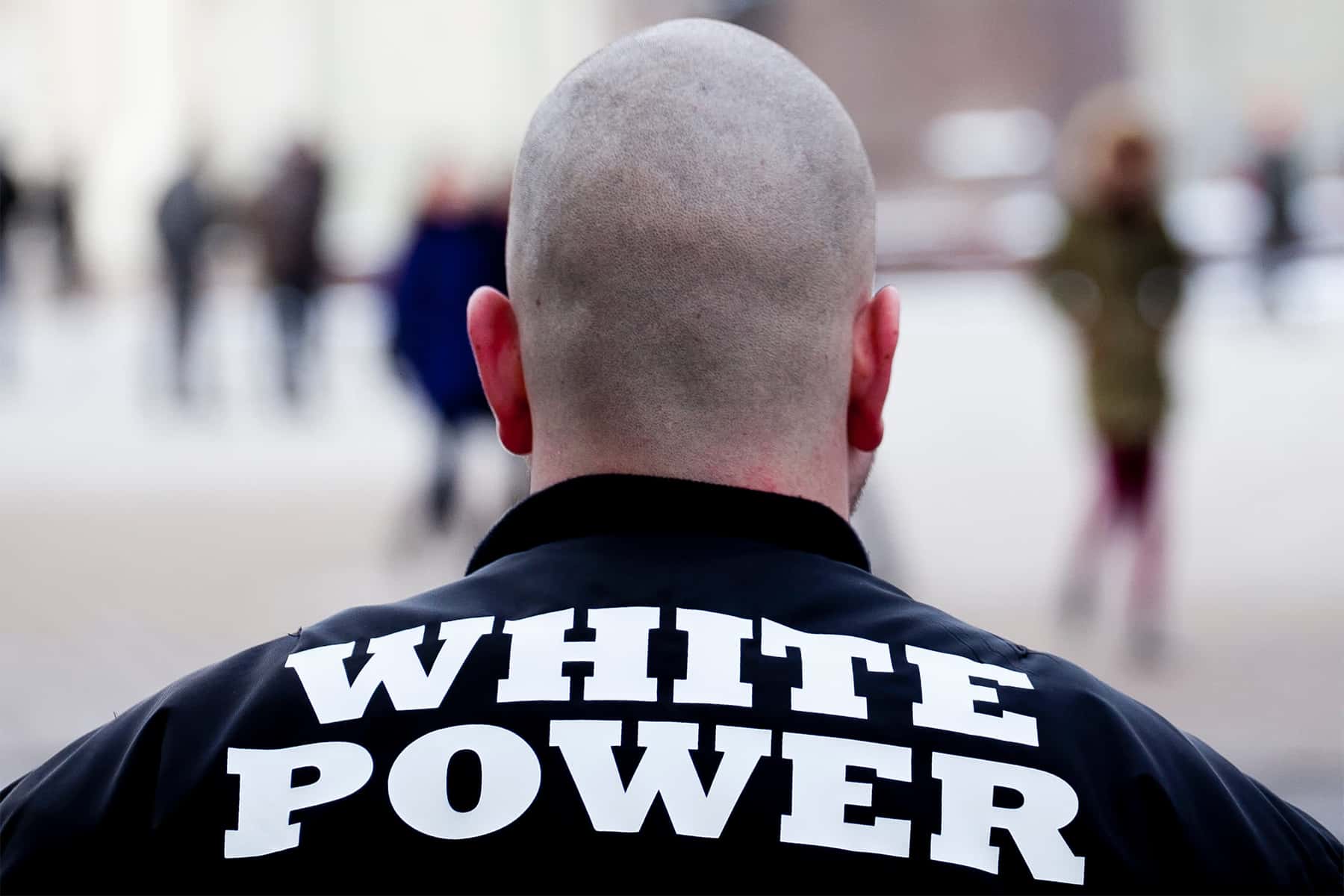
“Most racists have been uninterested in reform…racists have been either of the type who wished to oppress the black directly…or indirectly through avoidance.” – Joel Kovel
“Racism is a reflection of personal and collective anxieties lodged deep in the hearts and minds of White Americans.” – Lerone Bennett Jr.
I keep hearing this language from people about finding common ground with people on the other side. I’m quite frankly tired of it. Did anyone ask Dr. King to find common ground with Bull Connor? Did anyone ask John Lewis to find common ground with David Duke? Has anyone asked the Jewish community to find common ground with Neo-Nazis? Has anyone asked the victims of Larry Nasser to find common ground with their predator? Has anyone asked the women and men allegedly victimized by Harvey Weinstein and Kevin Spacey to find common ground with their rapists? The answer to all of those questions is no. I refuse to fall into this trap of equating a genuine love for and desire for justice, with the illegitimate hatred of racist people in this country.
Just because some of the racists in America don’t wear KKK hoods and don’t have a swastika tattoo on their bodies does not mean they aren’t racists. I hate it when every White person is called a racist but I also hate it when White people who are obviously racist are not called racist too. Defining racism is almost as difficult as defining love. Everyone who has experienced each can tell you how it feels but can’t adequately define either.
“Americans who would never embrace racism in the specifics of persons and places will express bigotry ruthlessly in generalities.” – Carl T. Rowan
Racism takes many forms. I think I need to spend some time explaining these different forms so that people get it. The way most people have been taught to look at and define racism is as individual acts of bigotry. Nowadays there is a growing belief in systemic racism by some. We have not peeked far enough down the proverbial rabbit hole to truly understand racism.
Most of us remain trapped in the narrow framework of the dominant liberal and conservative views of race in America, which with its worn-out vocabulary leaves us intellectually debilitated, morally disempowered, and personally depressed.” – Cornel West
Joel Kovel has studied and written extensively on the topic of racism. He sees two basic types of racism in this country. One of these he calls dominative and the other is aversive. He puts racists into these two camps. “The former is clearly associated with the American South, where, of course, domination of blacks became the cornerstone of society; and the latter with the North, where blacks have so consistently come and found themselves out of place.”
The way the two types of racists react to threats by Blacks such as the current spate of protests is instructive.
“The dominant racist, when threatened by the black resorts to direct violence; the aversive racist, in the same situation, turns away and walls himself off…in the South, disturbances in the formal social structure of white-black relations would in classic times bring out the lynch mob; while today, racial turmoil brings out a latent “white backlash.”
We are seeing signs of dominative racism playing out more and more often. Heavily armed White males are out in the streets claiming to be protectors of American values. They are willing to be violent in their words and deeds. When we look at footage of these individuals, men, women and children alike, they are pretty easily recognizable. They wear their racism on the outside. These dominant racists are the ones we’ve been taught to look out for.
“Blacks have a condition, not a problem. Whites have the problem, racism, that creates our condition. All we do is react.” – Rev. C.T. Vivian
Recently Marlow Stern wrote an important piece for the Daily Beast. He profiled a former Neo-Nazi. “Frank Meeink was a top Neo-Nazi who inspired Edward Norton’s character in American History X. He now speaks out against it — and says members of his old Neo-Nazi crew became cops.” As we battle an avalanche of police brutality and police murder across this nation, warnings have been given that these dominative racists have been busy infiltrating police departments.
In October 2006, the FBI released a little known intelligence assessment called, White Supremacist Infiltration of Law Enforcement. In this assessment the FBI warned that white supremacists “have historically engaged in strategic efforts to infiltrate and recruit from law enforcement communities.” The warning went unheeded for the most part. Few law enforcement agencies have actively put policies in place to cull out these white supremacists.
In June of last year, Will Charles and Michael Corey conducted an investigation for Reveal, looking at how these white supremacist cops use social media. “Inside hate groups on Facebook, police officers trade racist memes, conspiracy theories and Islamophobia.” Their findings are very disturbing on many levels.
“Hundreds of active-duty and retired law enforcement officers from across the United States are members of Confederate, anti-Islam, misogynistic or anti-government militia groups on Facebook, a Reveal investigation has found. These cops have worked at every level of American law enforcement, from tiny, rural sheriff’s departments to the largest agencies in the country, such as the Los Angeles and New York police departments. They work in jails and schools and airports, on boats and trains and in patrol cars. They also read and contribute to groups such as “White Lives Matter” and “Death to Islam Undercover.”
Their report led over 50 police agencies to launch an investigation into these activities. They found that “At the Unite the Right rally in Charlottesville, Virginia, marchers flew a “Blue Lives Matter” flag alongside anti-Semitic and white supremacist messages. In Portland, Oregon, police officers were found to have been texting with a far-right group that regularly hosts white supremacists and white nationalists at its rallies. A classified FBI Counterterrorism Policy Guide from April 2015, obtained by The Intercept, warned that white supremacists and other far-right groups had infiltrated American law enforcement.”
The Brennan Center for Justice last month released a report titled “Hidden in Plain Sight: Racism, White Supremacy, and Far-Right Militancy in Law Enforcement.” They say that “The government’s response to known connections of law enforcement officers to violent racist and militant groups has been strikingly insufficient.”
Very little conversation has leaked into discussions of this issue during the massive coverage of the protests surrounding the murder of George Floyd. Most of what we hear are conversations about some vague reference to reform, talk about more training, and defunding of police. If there are no real efforts to find these officers and remove them, these other efforts will be sorely lacking. Most American whites still believe strongly that “The cops are the good guys keeping us safe from the bad guys.” The fact that Blacks see it differently is the driving force behind the debates over police reform. We can’t afford to believe the cops are always the good guys. Our lives could be in jeopardy by believing this. We need to be much more conscious of who these cops could be.
I won’t argue that we don’t need police. We obviously do. However, we don’t need cops who have permission to be as violent as they want in encounters with civilians. There is no reason that a call about a counterfeit $20 bill should have led to George Floyd dying any more than Eric Garner selling loose cigarettes should have ended with him being killed with five or six cops on top of him. It does not matter if the cops involved were racists or not. These innocuous circumstances too often lead to violence by cops. They call it use of force, but it is simply violence. You can’t clean it up and call it something other than what it is. I’ve written previously about legitimate violence which is simply state sanctioned violence such as that used by police. This acceptance of state sanctioned violence has gotten us to where we are today.
The aforementioned Meeink told the Daily Beast, “I know that there are Neo-Nazis who I used to run with who are now cops. And that’s just in my crew. Imagine how many Neo-Nazis and white nationalists have been becoming cops? Three of the people in my crew alone became cops.” There is no doubt that some cops are racists whether they are associated with these groups or not. These cops may be a tiny minority of all cops but having any of them on a police force can be deadly for Blacks and other people of color.
BuzzFeed in collaboration with Injustice Watch in 2019 wrote a story titled Cops Across The U.S. Have Been Exposed Posting Racist And Violent Things On Facebook. Here’s The Proof. They found significant evidence of cops around the country posting racist and violent things on Facebook. The article included this.
When an armed, would-be robber backed out of a liquor store after the clerk pulled a gun on him, the surveillance video was posted on Facebook with a comment: “Should have shot him.” Another commenter responded, “I would of pulled the trigger.”These comments weren’t from your everyday Facebook users. They were the words of Philadelphia police officers. The North Charleston, South Carolina, police department fired an officer for posting a photo of himself wearing Confederate flag underwear, days after a white supremacist killed nine black worshippers at the Emanuel African Methodist Episcopal Church just miles away. He later settled a wrongful termination suit. The Chicago Police Department has tried unsuccessfully to fire an officer whose own commander complained of his “bigoted views.” A Facebook page called Chicago Code Blue attracted attention for inflammatory comments — such as “Every Thug Deserves a Slug” — after an officer was found guilty in the death of Laquan McDonald.
How much mainstream media attention have these things received in recent months? Very little that I’m aware of. Social media has been the dark cave that racists have crawled into for years to espouse their hatred. According to many analysts, Facebook has not closely monitored or ended this type of activity.
Kovel reminds us that racism is expressed in a spectrum of beliefs and behaviors. Not all racists are the same. Racist beliefs are malleable. Kovel says “racists hold all degrees of intensity of racist beliefs: some never move into action; others may, when provoked, reject the voice of conscience and pass entirely into the area of open racial hostility.”
Much has been said and written in recent years about unconscious bias. There is no doubt that racial biases and prejudices are very prevalent in the minds of many Americans. We are all bombarded with racist ideas in subtle and direct ways during our entire lives. Our brains don’t have the capacity to process all of it consciously so it stores these things in our unconscious. While stored there, these stereotypes and racist tropes sit idly by waiting to be used to help us make quick assessments of people. They come out of our unconscious into our conscious mind incredibly fast when we encounter people we’ve been taught are “dangerous” such as Black and Muslim men. We react negatively having the “fear impulse” activated automatically in these situations.
I have heard many people describe an experience of being on a dark street and seeing a Black male and immediately feeling fear. Likewise we hear stories of people on airplanes seeing people they think are Muslims and feeling either fear or a duty to be extra vigilant just in case. These are manifestations of unconscious bias built into us. By years of seeing Black and Muslim males in television, movies, newscasts, magazines, newspapers and on the internet portrayed as dangerous, the negative associations our brains make with these groups are cemented in our minds. None of us can avoid seeing these images and having those stereotypes embedded into our unconscious to be used at a later date and time. Despite having mostly positive interactions with Black and Muslim men, many still harbor these biases. These boogeymen are cemented into our unconscious minds without us having to do anything. We don’t have to learn it from our parents, American society teaches us all these things continuously.
Hollywood has for decades been the greatest purveyor of racist tropes and stereotypes. Seeing old cartoons with Bugs Bunny in blackface and Native Americans portrayed in old movies and cartoons as cannibals eating White people is stuck in the back of my mind somewhere. Many years before 9/11 we had all been indoctrinated to see Muslim-looking men as terrorists in scores of Hollywood films and television shows. The exposure to these ideas over a long period of time means that many will make negative associations of Black and Muslim men as dangerous even without trying. A study of unconscious bias at Stanford showed that it is possible to act in prejudicial ways while sincerely rejecting prejudiced ideas. “Even if people don’t believe racist stereotypes are true, those stereotypes, once absorbed, can influence people’s behavior without their awareness or intent.”
By far the biggest and baddest boogeymen in the unconscious minds of Americans are Black males. Studies show that when asked to identify the ages of children, once Black boys reach the age of ten people will see them as four years older than they are. In the case of 12 year-old Tamir Rice, killed by Cleveland police, the 911 caller later told authorities he thought Rice was a grown man. Black boys have been tried as adults at a rate far higher than their White peers. There is in many, a guttural reaction to crimes when committed by Black males that does not exist when the same crimes are committed by Whites.
One experiment I play is to ask people to close their eyes and think of a Black person who has become famous as the result of committing a crime. O.J. Simpson and Micheal Vick don’t count. They were already famous. Then try the same thing with Whites who became famous as the result of committing a crime. Here is a list that comes quickly to my mind of famous White criminals. John Dillinger, Al Capone, Bonnie and Clyde, The Unabomber (Ted Kaczynski), John Wayne Gacy, Charles Manson, Ted Bundy, Jeffrey Dahmer, The Boston Strangler (Albert DeSalvo), Jim Jones, John Gotti, Bugsy Siegel, Bernie Madoff, Ma Barker, Aileen Wuornos, The Son of Sam (David Berkowitz), Billy the Kid, The Zodiac Killer, Timothy McVeigh, Meyer Lansky, John Wilkes Booth, Lorena Bobbitt, Richard Speck, Casie Anthony, Dylan Roof, Eric Klebold and Eric Harris, DB Cooper, etc etc. Yet few of us can think of many non-whites that are well known criminals. Fame does not usually find you unless you are a White criminal in this country. Hollywood will make multiple movies and documentaries about you, and dozens of authors will write books about your crimes if you are White. Women will marry you while you are waiting on death row if you are a famous White criminal.
The Brennan Center for Justice spoke about the constant effort to stem implicit bias within policing by training officers. They said clearly that these efforts are insufficient. They mentioned that, “Since 2000, law enforcement officials with alleged connections to white supremacist groups or far-right militant activities have been exposed in Alabama, California, Connecticut, Florida, Illinois, Louisiana, Michigan, Nebraska, Oklahoma, Oregon, Texas, Virginia, Washington, West Virginia, and elsewhere.” How can you train this out of racists?
“These reforms, while well-intentioned, leave unaddressed an especially harmful form of bias, which remains entrenched within law enforcement: explicit racism. Explicit racism in law enforcement takes many forms, from membership or affiliation with violent white supremacist or far-right militant groups, to engaging in racially discriminatory behavior toward the public or law enforcement colleagues, to making racist remarks and sharing them on social media. While it is widely acknowledged that racist officers subsist within police departments around the country, federal, state, and local governments are doing far too little to proactively identify them, report their behavior to prosecutors who might unwittingly rely on their testimony in criminal cases, or protect the diverse communities they are sworn to serve.”
Let’s revisit Kovel’s types of racists. The dominative racist is one who acts out his/her bigoted beliefs. Kovel says “he represents the open flame of race hatred. The true white bigot expresses a definitive ambition through all his activity: he openly seeks to keep the black man down, and is willing to use force to further his ends.”
On the other hand is the aversive racist “who believes in white race superiority and is more or less aware of it, but does nothing overt about it. An intrapsychic battle goes on between these sentiments and a conscience which seeks to repudiate them, or at least to prevent the person from acting wrongly upon them. This often means not to act at all, and such inaction serves as the only resolution of the inner conflict…the person tends to behave in ways that avoid the issue: he tries to ignore the existence of black people, tries to avoid contact with them, and at most to be polite, correct and cold in whatever dealings are necessary between the races.” This is the white person who gives you the fake smile that disappears in mere seconds.
“I hate it when people throw around the terms reverse racism. I can be prejudiced but not racist. To be a racist, you have to be able to oppress another race. To do that, you have to have economic and political power. Blacks don’t have that; whites do.” – Dawn Kelly
Kovel says you find two extremes within aversive racists. “At one extreme those individuals, who upon threat…lapse into dominative racism: and at the other, those who, impelled by a strong social conscience, consider themselves liberals and, despite their sense of aversion (which may not even be admitted inwardly), do their best within the given structure of society to ameliorate the conditions of (Blacks)…Aversion in these variants is revealed in a pronounced willingness to undertake social reform via remote, impersonal means, and by a corresponding reluctance to engage in any kind of intimacy with black people.”
The dominative racist “must not only keep the needed object of his hatred oppressed; he must also ensure that this other person enact the very traits that the bigot needs to see in him.” This is manifest in Hollywood constantly reminding us of the ills of the Black community and individuals without simultaneously expressing the causes of these ills. Rarely they will show a “bad White person” as the expression of racism in America. These images and portrayals are often balanced by an angry Black person who hates White people.
Never are we given the opportunity to ask whether the anger that Black person has is legitimate. What Black person can be enslaved their entire lives, have their children stolen from them, their wives raped in front of them, their labor stolen from them and not be justifiably angry? How can a Black person be the victim of lynchings, anti-Black race riots, an unjust so-called criminal justice system, cheated by his employers, denied work in “Whites-only” jobs, forced to sit in the back of the bus, told you can’t buy a home in certain neighborhoods because you are Black, be denied a bank loan because you are Black, forced to sit in the balcony of the movie theater, told you can’t use the bathroom wherever you choose, be denied admission to a school because it is for Whites only, forced into the most dirty, demeaning jobs over generations, locked up in prisons for longer periods of time than Whites convicted of the same crimes, passed over for promotions by Whites that you’ve trained, sent to underfunded schools generation after generation and not be justifiably angry?
When Dr. King talked about loving the Bull Connors’ of the world people misinterpreted what he meant.
“it would be nonsense to urge men to love their oppressors in an affectionate sense…Agape is disinterested love. It is a love in which the individual seeks not his own good, but the good of his neighbor. Agape does not begin by discriminating between worthy and unworthy people, or any qualities people possess. It begins by loving others for their sakes…Therefore, agape makes no distinction between friends and enemy; it is directed toward both.”
I have no love for racists. I don’t care about finding common ground with them. I think it is a fool’s errand to do so. If that racist person finds the moral compass which allows them to do what Frank Meeink did and disavow their racist views and redeem themselves in a real way, then I can find common ground with them. I will not do so prematurely. This is a perfectly reasonable expectation.
“I wheel my two-year old daughter in a shopping cart through a supermarket…and a little white girl riding past in her mother’s cart calls out excitedly, ‘Oh look Mommy, a baby maid!’ And your mother shushes you, but does not correct you.” – Audre Lorde
It would be immoral for me to make excuses for their racism. I know that they are inside a system they did not create, but far too many of them perpetuate the status quo. Whether it is done intentionally or not, does not matter. The impact will unfortunately be the same.
Their are multiple examples of Whites who on the surface have appealed to justice for Blacks but aversively dismissed a real caring for Black people. Over many years the Quakers attacked the institution of slavery and called for better treatment of Blacks. Despite this, they refused to be buried in cemeteries with Blacks and would never support cross racial intimacy and marriage despite how egalitarian their beliefs were. The limits of their advocacy made them aversive racists according to Kovel.
This aversive racism plays out in the workplace daily. I can remember plenty of times when White colleagues invited me to a bar or party on their side of town but refused to come to my side of town when invited. The argument that many will probably make about this is the old trope that those people probably thought it wasn’t safe. This is pure nonsense. Why would I expose them and myself to an unsafe environment on purpose? Sociologist Joe Feagin talks about how pervasively aversive racism manifests itself in workplaces.
“Aversive racism occurs often for black employees. It is part of the woodwork, the routine practices that African Americans face in and around their workplaces.”
Ultimately this battle and ensuing racial battle fatigue felt by many Black people destroys any hopefulness we may feel. When do we build up enough confidence in Americans from the White community to say that there is a light at the end of the tunnel? How can we constantly talk about a color-blind America when it is the most ridiculous thing ever said?
“Neither the courts nor the Congress nor the president can declare…that the United States is a color-blind society…Those who insist that we should conduct ourselves as if such a utopian state already existed have no interest in achieving it and, indeed, would be horrified if we even approached it.” – John Hope Franklin
Many want to point to the election of President Barack Obama as the sign that America had become a post-racial society. Let me debunk this misbelief associated with his election. According to exit polls of the 2008 and 2012 elections most Whites voted for the other candidate. When he was elected in 2008, Obama received just over 42 percent of the White vote, meaning clearly that about 58 percent of White voters did not want that Black man to be their President. In 2012 the results were worse. He received just 39 percent of White votes when he was re-elected. Sixty-one percent of White voters voted against Barack Obama in that election. How is this indicative of a post-racial America? His support by Whites was very closely aligned with the general support all Democratic candidates have received in presidential elections going back to 1980. Jimmy Carter’s 48 percent of the White vote in 1976 was an aberration. In the eight elections prior to 2008. Democrats received and average of 40.4 percent of White votes. White support for Obama in the two elections he won was exactly the same as Democratic candidates received on average. The two weak candidates on the Republican ticket had as much to do with his wins as the support of Whites. The fact that Blacks voted at a higher rate in 2012 than Whites did for the first time since in the nation’s history was a factor as well. The 1980 and 1984 elections are the only time in the previous 36 years where White support was lower for Democrat’s than it was for Obama in 2012. Both Jimmy Carter in 1976 and Bill Clinton in 1996 received stronger White support than Obama in 2008.
“The ‘color-blind theory’… has as its main premise that after 365 years of slavery and legal segregation, only twenty five years of governmental laws and actions were necessary to reverse the historical systemic and legalized segregation and inequality in this country, and no further remedial effort is needed. The net effect of the color-blind theory is to institutionalize and stabilize the status quo of race relations for the twenty-first century: white privilege and black deprivation…This does not sound like the racial utopia Martin Luther King dreamed of. Indeed, it may be his worst nightmare.” – Robert Staples
In 1967 Dr. King wrote these words about the burden of racism for Black people in America.
“Being a Negro in America is not a comfortable existence. It means being part of the company of the bruised, the battered, the scarred, and the defeated. Being a Negro in America means trying to smile when you want to cry. It means trying to hold on to physical life amid psychological death. It means the pain of watching your children grow up with clouds of inferiority in their mental skies. It means having your legs cut off, and then being condemned for being a cripple. It means seeing your mother and father spiritually murdered by the slings and arrows of daily exploitation, and then being hated for being an orphan. Being a Negro in America…means being harried by day and haunted by night by a nagging sense of nobodiness and constantly fighting to be saved from the poison of bitterness. It means the ache and anguish of living in so many situations where hopes unborn have died.”

